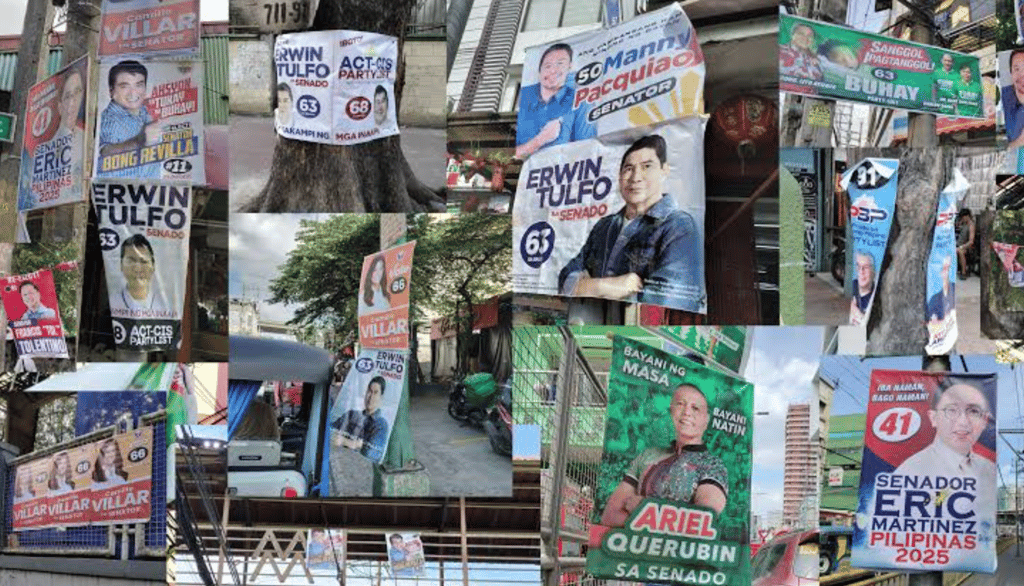Political campaign season in the Philippines often transforms streets into a visual battleground, with posters, tarpaulins, and banners plastered on every available surface, including trees. While political advertisements are a staple of every election cycle, affixing them to trees is not only environmentally harmful but also illegal under Philippine law. Despite existing regulations, this harmful practice persists, highlighting the need for stricter enforcement and increased public awareness.
Legal Framework: Protecting Trees from Political Abuse
The protection of trees from damage caused by affixing materials is covered under Republic Act No. 3571, enacted in 1963. This law prohibits the cutting, destroying, or injuring of trees in public places, including roadsides, parks, and schools (Department of Environment and Natural Resources [DENR], 2022). This was further strengthened by Presidential Decree No. 953, issued in 1976, which penalizes violators with imprisonment from six months to two years or fines ranging from ₱500 to ₱5,000, or both (DENR, 2022). These laws were designed to preserve the health of trees and maintain ecological balance.
The Problem Persists: Political Disregard for Environmental Laws
Despite these legal safeguards, the problem remains widespread. During the 2022 elections alone, the DENR reported the removal of approximately 114,664 campaign materials illegally attached to trees across the country (DENR, 2022). This massive number reflects the continuous disregard for environmental regulations by political candidates and their supporters. The use of nails, wires, and other sharp objects to secure posters damages the tree bark, making trees vulnerable to pests, diseases, and decay.
Environmental Impact of Political Campaigning
When trees are injured, their ability to absorb carbon dioxide, provide oxygen, and stabilize soil weakens. Wounded trees become susceptible to infections from insects and fungi, which can lead to long-term damage or death. Moreover, the plastic and synthetic materials used in campaign posters contribute to environmental pollution, as they often end up as waste in landfills or waterways.
Solutions: Greener Campaigning and Stronger Enforcement
To address this issue, several measures can be implemented:
1. Strict Law Enforcement – Government agencies, particularly the DENR and the Commission on Elections (COMELEC), must impose stricter monitoring and enforcement of RA 3571 and PD 953. Candidates found violating these laws should face penalties without exception.
2. Public Awareness Campaigns – Educating both candidates and the public about the environmental consequences of affixing materials to trees can foster accountability and encourage more eco-friendly campaign practices.
3. Eco-Friendly Campaigning – Promoting the use of biodegradable materials and designating common poster areas can reduce environmental damage while allowing political expression.
4. Community Engagement – Empowering local communities to report violations and actively participate in environmental protection can create a sense of shared responsibility.
Political Responsibility in Environmental Protection
Political campaigns reflect the values of the candidates they promote. Respect for the environment should be one of these values. Politicians who fail to uphold environmental laws not only harm trees but also send a message of disregard for the law and ecological responsibility. As the next election season approaches, candidates must be held accountable not only for their promises but also for their actions toward environmental stewardship.
REFERENCES
Department of Environment and Natural Resources. (2022). DENR takes down over 114,000 campaign materials posted on trees. [https://denr.gov.ph/news-events/denr-takes-down-over-114000-campaign-materials-posted-on-trees](https://denr.gov.ph/news-events/denr-takes-down-over-114000-campaign-materials-posted-on-trees)]




